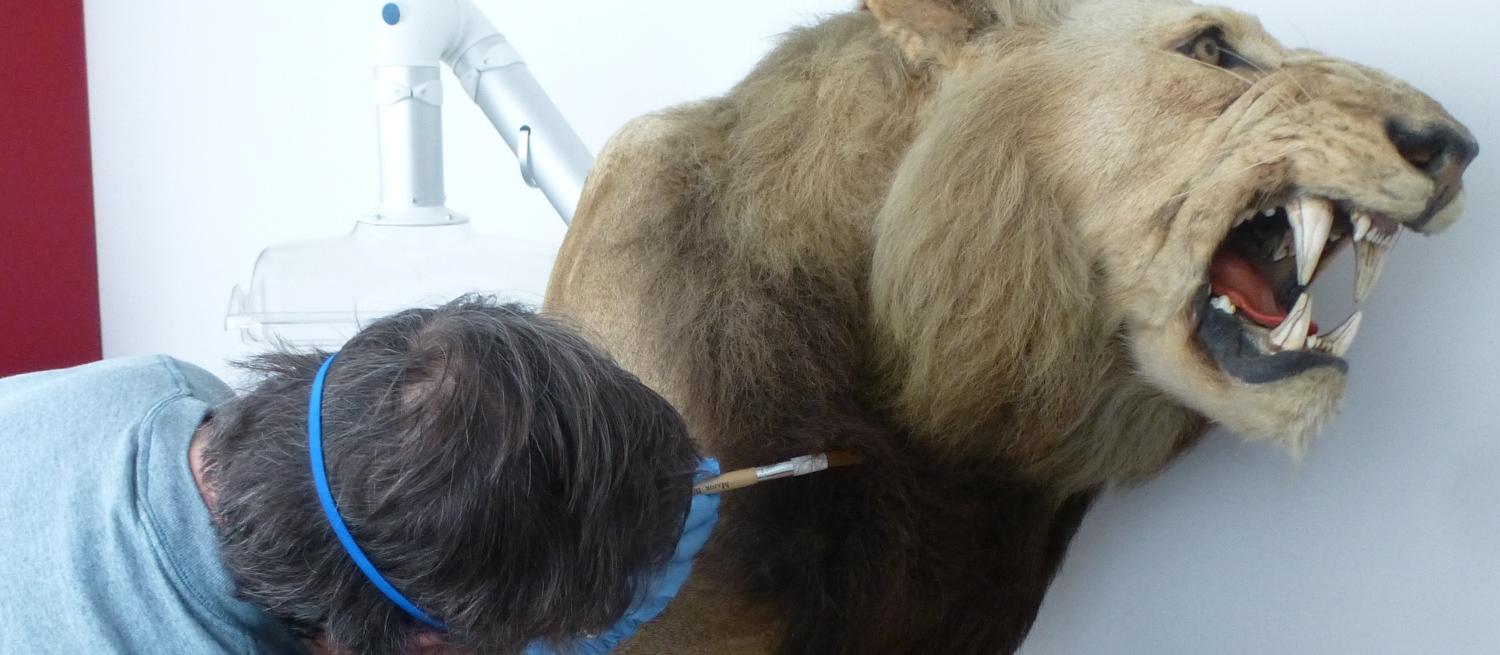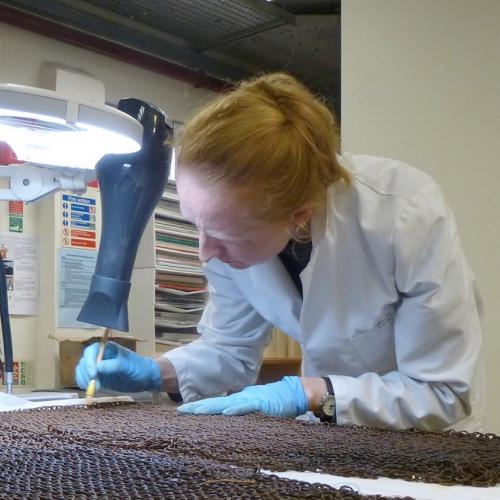Alison Foster, our Conservator recently explained to some young people what's involved in her role.
Caring for, and occasionally repairing, objects from the past is known as conservation, and the people who do this specialised work are called Conservators.
There are many ancient objects, or artefacts, being cared for by conservators at Verulamium Museum - and these objects are made from all sorts of different materials. You can see things made from stone, ceramic, bone, wood, metal and glass, to name just a few.
How do conservators take care of them all? Different materials age in different ways, and so need to be looked after differently. Yet there are some general things that a conservator can do to slow down the ageing process for most objects.
Top 5 ways to care for an object
Handling
Many of these objects are around two thousand years old. Handles on jugs and hooks on oil lamps (for example) are not as strong as they once were, and might break if we use them. So we need to support objects carefully, with two hands and over a padded table. Wearing gloves protects objects from sticky fingers and protects fingers from any harmful products that might be on the objects.
Storage
Museums use special storage and packing materials to store their artefacts. These include tissue papers, foams, boxes and fabric which do not harm artefacts by scratching, staining or chemically reacting with them. Have you ever got black hands from handling a newspaper? We wouldn’t want to turn our objects black by wrapping them in newspaper, so use a white ‘acid-free’ paper instead.
Environmental monitoring
As artefacts age they can become weaker and more likely to be harmed by everyday things. Heat from the sun or a radiator, light from bulbs or windows, and moisture in the air or from rain, can all damage artefacts. Conservators check the environment using monitoring equipment to make sure it is not harming the artefacts. Special film on windows can act a bit like sunglasses to protect artefacts from damaging sunlight.
Pest monitoring
Have you ever found a hole in one of your woolly jumpers? Chances are it was eaten by an insect. Different kinds of insects eat different materials, and sadly they cannot tell the difference between a priceless artefact or a tasty worthless treat. Silverfish enjoy eating their way through books, whilst certain beetles can chew their way through wood. Rare artefacts that are thousands of years old can be damaged and lost in this way. Conservators are responsible for making sure this does not happen by finding out which pests live in the museum, and taking action to stop them eating the collection.
Cleaning
Did you know that dust can be damaging to artefacts? Dust is actually a mixture of unpleasant substances including skin cells, hairs, soil and pollution in the air. It attracts water in the air which holds the dust to artefacts, sometimes causing staining, marking or chemical damage. Details on objects can also be hidden by dust and dirt. Careful cleaning of the museum and its artefacts is an important part of a conservator’s job. Sometimes an artefact can be so fragile that it needs to be supported or repaired. Conservators have special methods and materials they use to repair objects without damaging them, or changing their appearance.
Conservators enjoy working practically with their hands and do things carefully. Do you think you have the patience to be a conservator?

